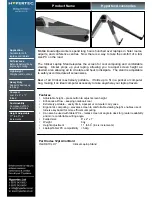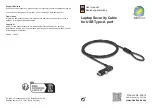
170
Glossary
disk
—A round, flat piece of material that can be magnetically
influenced to hold information in digital form, and used in the
production of magnetic disks, such as hard disks. Compare
disc
. See also
hard disk
.
disk drive
—The device that reads and writes information and
programs on external media or hard disk. It rotates the disk
at high speed past one or more read/write heads.
document
—Any file created with an application and, if saved
to disk, given a name by which it can be retrieved. See also
file
.
double-click
—To press and release the pointing device’s
primary button rapidly twice without moving the pointing
device. In the Windows operating system, this refers to the
pointing device’s left button, unless otherwise stated.
download
—(1) In communications, to receive a file from
another computer through a modem or network. (2) To send
font data from the computer to a printer. See also
upload
.
drag
—To hold down the mouse button while moving the pointer
to drag a selected object. In the Windows operating system,
this refers to the left mouse button, unless otherwise stated.
driver
—See
device driver
.
DVD
—An individual digital versatile (or video) disc. See also
DVD-ROM
.
DVD-ROM (Digital Versatile [or Video] Disc Read-Only
Memory)
—A very high-capacity storage medium that uses
laser optics for reading data. Each DVD-ROM can hold as
much data as several CD-ROMs. Compare
CD-ROM
.
E
enable
—To turn on a computer option. See also
disable
.
executable file
—A computer program that is ready to run.
Application programs and batch files are examples of
executable files. Names of executable files usually end with
a .com or .exe extension.
expansion device
—A device that connects to a computer to
expand its capabilities. Other names for an expansion device
are port expander, port replicator, docking station, or
network adapter.















































